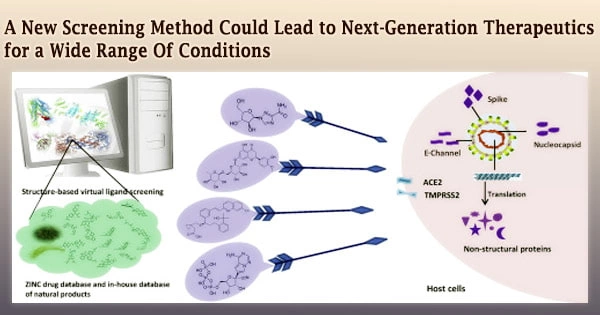Researchers from the University of California, Irvine devised a high-throughput screen technology to find chemicals that influence the rhodopsin (RH) G protein-coupled receptor (GPCR).
GPCRs mediate a variety of key physiological activities and are one of the most successful therapeutic targets for a wide range of illnesses, including diabetes and immune system problems.
The work, titled “Identification of small molecule allosteric modulators that operate as enhancers/disrupters of rhodopsin oligomerization,” was published in the Journal of Biological Chemistry and serves as a monitoring tool for future Rh signaling cascade research.
It also highlights the discovery of novel allosteric Rh dimerization modulators, which can affect the physiology of rod photoreceptors in the eye. Lead compounds with allosteric regulation of rod light response kinetics or lowering of rod sensitivity were found by the researchers. The next stage will be to enhance the pharmacological characteristics of the lead compounds using medicinal chemistry.
This method will be tried in additional GPCR systems, including opioid, adrenergic, and other receptors, opening the path for the identification of more targeted modulations of GPCR signaling. The identification and manufacture of next-generation drugs are the consequence of these improved insights.
Krzysztof Palczewski
“Our employed methodology will open new avenues for study, tremendously benefitting the discipline of pharmacology by improving understanding of the role of GPCR dimerization,” said Krzysztof Palczewski, Ph.D., Donald Bren Professor of Ophthalmology in the UCI School of Medicine, and corresponding author.
“This method will be tried in additional GPCR systems, including opioid, adrenergic, and other receptors, opening the path for the identification of more targeted modulations of GPCR signaling. The identification and manufacture of next-generation drugs are the consequence of these improved insights.”
Understanding the function of GPCRs and finding drugs that increase or disrupt the dimerization of the GPCR rhodopsin (Rh) might be the key to unlocking the full potential of these potent medicinal targets.
Many GPCRs exist as dimers and oligomers, according to recent research, and their organization is critical for effective activity. Due to a lack of accurate structural knowledge, the functional relevance of Rh dimerization is still uncertain.
Tamar Getter, a UCI biochemistry of vision post-doctoral scholar; Frans Vinberg, Ph.D., ophthalmology/visual sciences assistant professor; and Albert Kemp, a biomedical engineering student, all from the University of Utah, Salt Lake City, were also part of the study team.
This research was supported by National Institutes of Health funds R01EY014800, P30EY026651, and R24EY027283, as well as Research, to Prevent Blindness, the Department of Ophthalmology at UCI, and the Department of Ophthalmology & Visual Sciences at the University of Utah.





